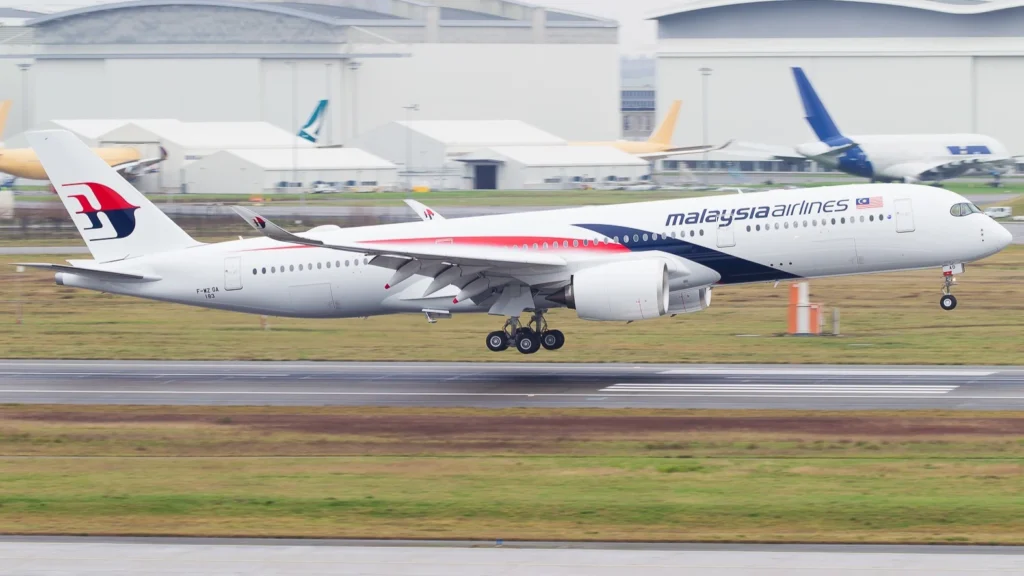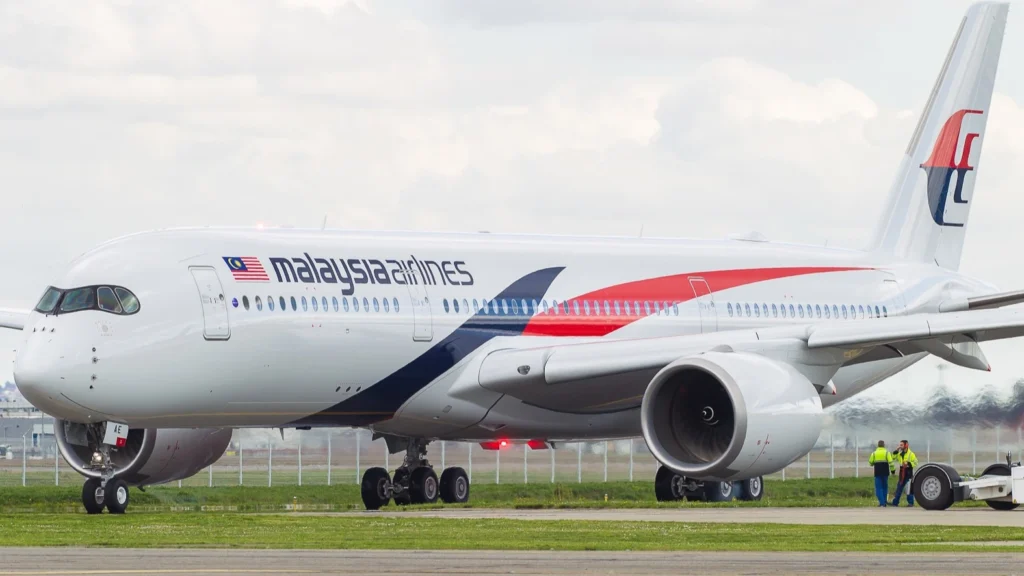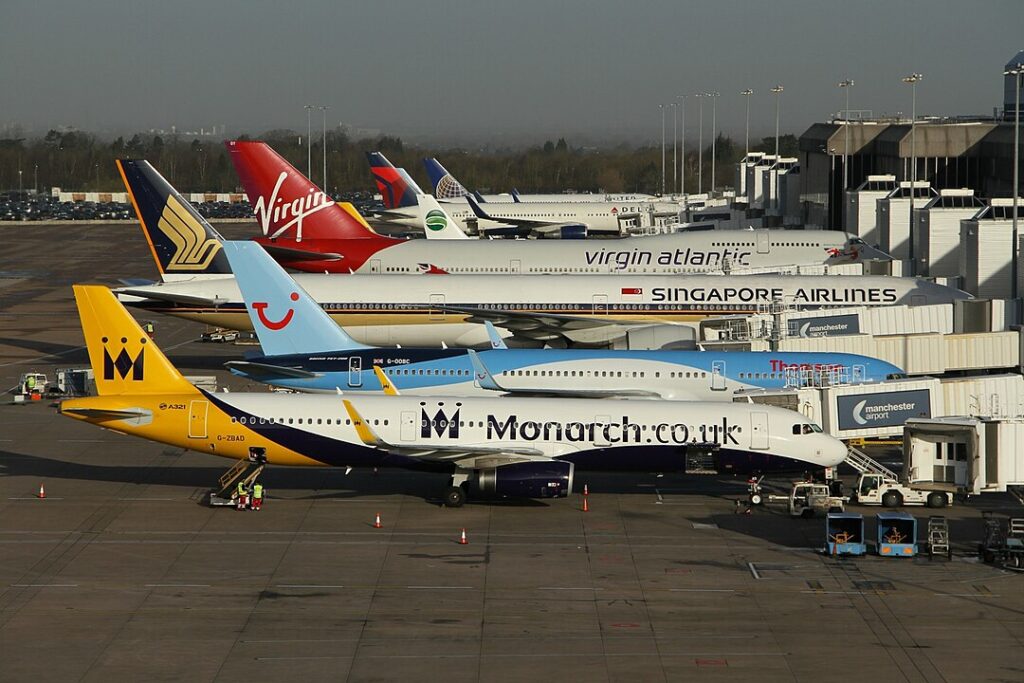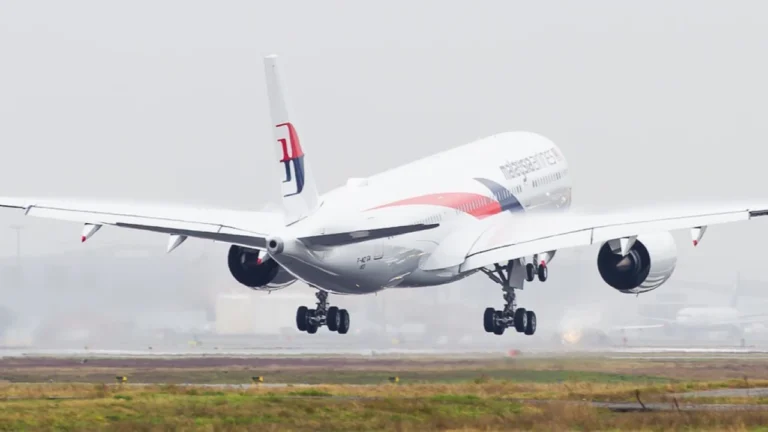KUALA LUMPUR- Malaysia Airlines (MH) pilots demonstrated exceptional flying skills during a challenging landing at London Heathrow Airport (LHR) amid Storm Darragh, earning widespread acclaim from aviation enthusiasts and social media users.
A video captured by the aviation spotter channel Big Jet TV showcased the remarkable precision of the Airbus A350-900 flight crew as they navigated intense crosswinds.

Malaysia Airlines A350 Pilots Praised
The pilots executed a complex aviation maneuver known as “crabbing,” where the aircraft is positioned diagonally with its nose pointing against the wind while maintaining a forward trajectory toward the runway. This advanced technique allows pilots to counteract strong crosswind conditions and ensure a safe approach.
Social media platforms erupted with praise for the Malaysia Airlines crew. Fans on the True Malaysia Airlines Fans Facebook group shared enthusiastic comments highlighting the pilots’ expertise. Commenters like Azreen Aznan described the pilots as “awesome,” while Wai Long Mok commended the “amazing flying” and “great crabbing” demonstrated during the landing.
The video captured the intense moment of the approach, with the aircraft maintaining a steady cruise despite turbulent conditions. The aviation spotter recording the landing was visibly impressed by the pilots’ skill, audibly expressing awe at the precise navigation.
This incident is not an isolated example of Malaysia Airlines pilots’ proficiency in challenging weather conditions. The airline has previously garnered recognition for its pilots’ ability to handle adverse meteorological scenarios with exceptional skill and precision.
Also Read: Thai Pilots Apposes Foreign Pilots Flying Domestic Flights and Salary Breakdown

Storm Darragh Affected Travel
Severe weather conditions have precipitated widespread aviation disruptions across the United Kingdom, causing hundreds of flights to be canceled or diverted. The storm’s impact has created significant challenges for airlines and passengers operating through major international airports.
Heathrow Airport, the UK’s busiest international aviation hub, experienced extensive flight interruptions. Multiple international carriers, including Delta, American Airlines, and Air Canada, were forced to divert transatlantic flights to alternative destinations such as Brussels. These diversions created cascading logistical challenges for airlines and passengers.
British Airways implemented over 100 short-haul domestic and European flight cancellations. The disrupted routes included critical connections to Edinburgh, Jersey, Milan, Nice, and Vienna. Holiday destinations like Malaga, Larnaca, and Gibraltar also experienced significant ground stops.
International carriers beyond British Airways encountered similar operational difficulties. Lufthansa suspended flights to and from Frankfurt and Munich, while KLM grounded services from Amsterdam. Aer Lingus comprehensively suspended connections from Cork, Dublin, Knock, and Shannon to Heathrow.
One particularly illustrative example of the storm’s impact involved an Etihad Boeing 777 flight from Abu Dhabi. The aircraft spent an hour circling before ultimately being diverted to Frankfurt, with plans to proceed to Manchester later in the day.

Disruption Across UK
George Best Belfast City Airport experienced at least 30 flight cancellations affecting routes to and from critical destinations including Cardiff, London Heathrow, Manchester, Edinburgh, and Glasgow.
Belfast International Airport witnessed easyJet canceling flights connecting Bristol and Liverpool. The disruptions extended to Bristol Airport, where a Ryanair flight from Venice was diverted to London Stansted, and a KLM flight from Amsterdam was rerouted to Birmingham. EasyJet grounded approximately two dozen flights, impacting routes to Barcelona, Porto, and Geneva.
The airline communicated directly with passengers, citing UK government guidance to avoid travel within the Bristol area on December 7th as the primary reason for flight suspensions. This directive underscores the severity of the meteorological conditions affecting transportation infrastructure.
Cardiff Airport also experienced significant operational challenges, with a cargo plane from China diverting to Bournemouth. Despite the widespread disruptions, some limited operations continued, with Ryanair maintaining a flight from Dublin and Tui operating a service from Alicante.
Transnational routes faced substantial interruptions, particularly between the UK and Ireland. Aer Lingus encountered significant complications with flights from Cork and Shannon to Heathrow, further highlighting the storm’s extensive impact on international air travel.
Feature Image by Clément Alloing | Flickr
Stay tuned with us. Further, follow us on social media for the latest updates.
Join us on Telegram Group for the Latest Aviation Updates. Subsequently, follow us on Google News

